When and how to plant currants in the fall: timing and rules for planting black, white and red varieties
With the arrival of autumn and the end of the harvest of the main crops, many gardeners are trying to do as much as possible what in the spring there will be no time for, namely, plant fruit trees and berry bushes.
In this article, we will talk about when and how to properly plant currant seedlings in the fall in open ground.
The procedure for planting red, white and black currants in autumn is absolutely the same, there are no nuances.
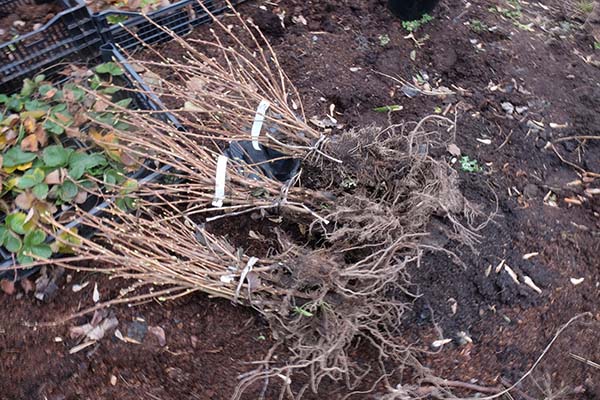
Content
When to plant currants in autumn, in what month: optimal timing
Naturally, the timing of the autumn planting of currants depends on the weather conditions and the climate of your region: the longer the positive air temperature lasts, the later you can plant.
In any case, you should not delay: you must have time to plant the seedling 2-4 weeks before the expected frost, so that the plant can take root well in a new place and form new young roots (= prepare for wintering).
However, it is not worth planting currants too early. As a rule, by this time (optimal for planting), the leaves on the seedlings should already begin to fall or completely fall off. If you do this much earlier, then the seedling will evaporate a lot of moisture from the leaves, which is why it will not actively take root in a new place.
Important! In case of premature frost, it is better to postpone the planting procedure until spring by placing a currant seedling in the basement for the winter.
Advice! The site has a detailed article about spring planting of currants.
When to plant in autumn in different regions
Now let's talk about the approximate dates for planting currants in the fall:
- So, in the South of Russia, currant seedlings can be planted until the end of October.
- But for gardeners of the Middle Strip and the Moscow Region, planting currants in the fall is recommended to be carried out in the second half of September and the first half of October.
In the Leningrad Region - until the first days of October.
- In Siberia and the Urals, the timing of the autumn planting of currants is even shorter - from late August to mid-September.
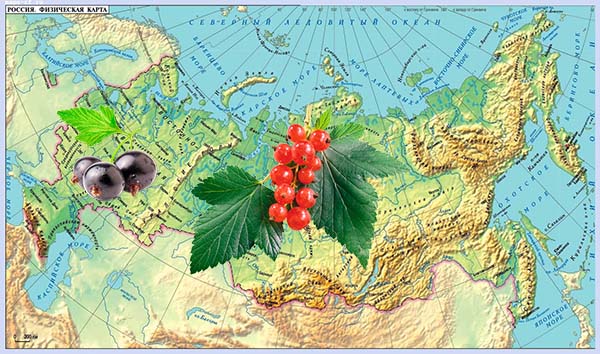
According to the lunar calendar in 2020
Choose the optimal date for planting seedlings can help you moon calendar.
So, favorable days for planting currants in the fall in 2020, according to the lunar calendar, are:
- in September - 19-26;
- in October - 3-13, 18-21.

Unfortunately, it is not always possible to get to the dacha on the indicated days, so the main thing is not to land on dates that are not suitable for the lunar calendar (the days of the Full Moon and New Moon, as well as the period when the Moon is in Aquarius, since this is a barren and dry sign -italicized).
Unfavorable days, according to the lunar calendar, for 2020 for the autumn planting of currant seedlings, the following dates are:
- in August -3, 4-5, 19, 31;
- in September -1, 2, 17, 27-28.
- in October - 2, 16,24-26, 31
- in November - 15,20-22, 30.
According to the lunar calendar, from the magazine "1000 Tips for Summer Residents".
When is it better to plant - in autumn or spring
Many novice summer residents cannot decide in any way when it is better for them to plant currants - in autumn or spring.
As a rule, it is autumn that is considered the best time to plant currants, as well as most berry bushes. However, this does not mean that you cannot plant bushes. in early spring. In this case, you will need a little more attention from your seedlings, because you will have to monitor them throughout the entire warm period.
By the way! The site has a separate material about spring planting of currants.
- Wider selection of open-root planting material.
- Easy care after fall planting.
- Saving time. In the fall, gardeners have much more free time than in the spring.
- Higher survival rate. This is due to the fact that in the spring the currant enters the growing season very early, and therefore the young seedling must simultaneously spend energy on the growth of shoots and leaves, as well as on the development of the root system. And in the fall, in currants, all forces are directed purely to rooting.
Planting currants in the fall: step-by-step instructions from A to Z
To plant currants correctly, you first need to choose high-quality seedlings, a place on the site, prepare a planting pit, plant seedlings directly and carry out the main post-planting event - pruning the shrub. More about everything further.
Video: planting currants in the fall
Selection and preparation of a seedling for planting
A high-quality currant seedling should have the following characteristics:
- It is best to give preference to 1-2-year-old currant bushes, which have a well-developed root system (about 20-25 cm long, the roots themselves are fibrous), and the aerial part consists of 1-4 shoots, at least 25-30 cm long ...
When buying seedlings with an open root system (ACS), it is highly desirable to purchase exactly 1-year-old specimens. But seedlings with a closed root system (ZKS) can be purchased both 1-year-old and 2-year-old.
- All the shoots of the "autumn" seedling should be already lignified, without signs of active vegetation (the leaves should have fallen off or at least begin to dry).
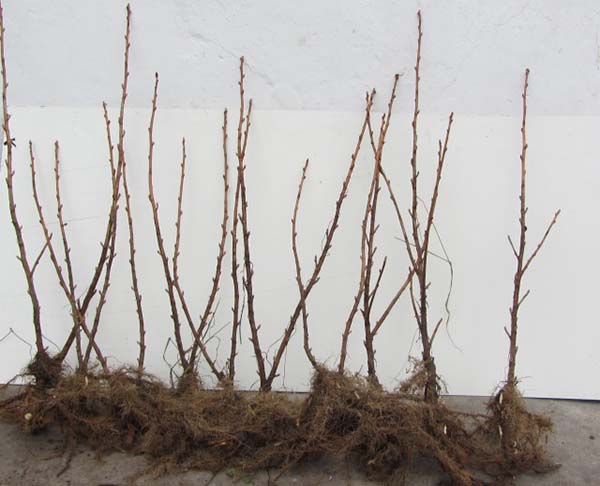
- Naturally, the seedling must have a healthy appearance and be free of any signs of disease and pest infestation (glass, powdery mildew, kidney mite etc.), and also have no mechanical damage.
Of course, it is quite difficult to assess the root system of a seedling in a container (with SCS), but it is possible. So, the seedling must sit firmly in the container, this will mean that the roots are well braided with an earthen ball and the plant was originally grown in the container, and was not transplanted into it a couple of days or weeks ago.
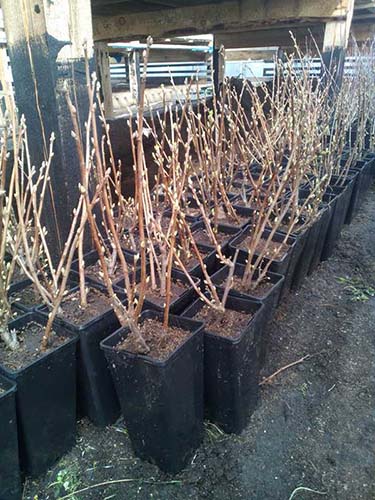
How to prepare a seedling
After purchase and before planting, you will need to somehow save the seedling, namely, wrap the roots with a damp cloth and place in a bag.
Before planting a seedling, for better survival of its rhizomes, you can dip it in a clay mash, reminiscent of thick sour cream in consistency, or hold it for a couple of minutes in any root formation stimulator (for example, in Heteroauxin or Kornevin).
Advice! Also, before planting, it is recommended to cut too long roots, shortening them to 20-25 cm, and dried roots to living tissue. In addition, the damaged roots must be completely cut out.
Choosing a place on the site
Currants love the sun, therefore, for planting it, you should choose well-lit places, but not completely open (preferably protected from northern winds and drafts).
However! There is an opinion that the currant is quite tolerant of light shading, it even benefits it, tk. currant berries often suffer from sunburn.
But a deaf shadow behind a shed or near a fence, a near-stem circle of a spreading fruit tree, even heavily overgrown raspberry bushes are all unsuitable places for planting currants. There she will bear poor fruit and more often be affected by diseases.
Planting currants in a lowland, in swampy and waterlogged places, as in the case if you have close ground waters (closer than 1.5 meters), is a completely failed idea. Bushes planted in such areas will hurt and, as a result, are likely to die.
In this case, you should plant currants on an artificial hill.
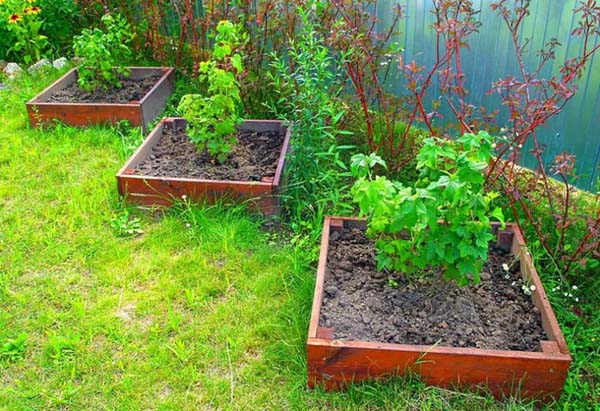
At what distance to plant - planting scheme
A correctly chosen scheme for planting currants is one of the most important factors for success in growing this crop. After all, growing, currant bushes fill a fairly large space.
So, in the row-spacing, the distance should be about 2 meters, and in the row between the currant bushes - about 1.5 meters (2 is better too).
Important! You should also step back from the fence at least 1 meter.
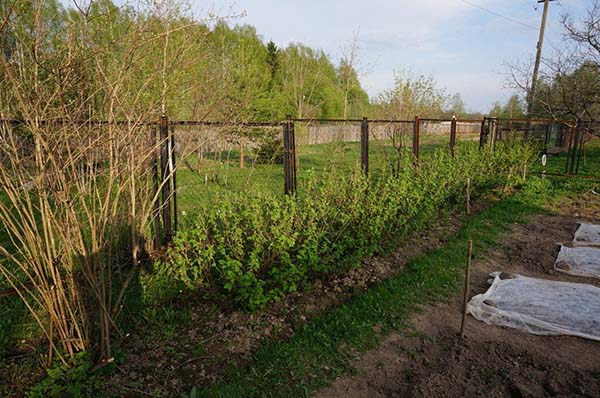
Culture Neighborhood Rules
Some novice summer residents quite often have the idea that currants and gooseberries are not the best neighbors. This is partly true, because cultures do have common diseases (powdery mildew) and pests (aphid), and in the case infection of one plant, the second is likely to suffer too.
What exactly should not be close to planting currants is with raspberries: its rather tall shoots can simply shade your currant bushes.
Suitable soil
Currants will grow well on light (loose) and fertile soils, the same loam or sandy loam soil (in the first it is better to add additional mineral fertilizers, in the second - more organic matter). In this case, the acidity of the soil should be neutral.
Currants, like many other plants (except for heather), do not grow well in an acidic environment. You can lower the acidity (deoxidize) the soil by adding to it dolomite flour, lime or wood ash.
Naturally, if you periodically apply fertilizers and make regular watering, the currants will grow well on poorer sandy or clay soils.
However, if the soil is excessively clayey, the water will stagnate, the root collar will rot and the seedling will simply disappear. On the contrary, if the soil is too sandy, the seedling may dry out from lack of moisture, which will evaporate very quickly after watering.
Advice! To make the clay soil loose, it is mixed with sand. If the soil on the site is too sandy, then clay is added to it.
To what depth to plant (size of the planting pit)
The optimal size of the planting pit for currants is 50 by 50 centimeters (depth and width / diameter), but it can be wider and deeper (up to 60 cm). Although the owners of initially fertile land may not dig such large holes: it will be enough for them to make a 30-40 cm hole.
Remember! The larger the hole, the more fertile soil can be laid in it.
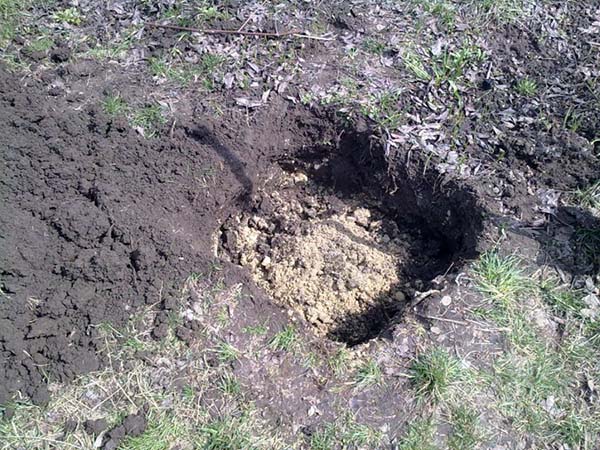
Advice! If you are planting a seedling in a container (with ZKS), then just make a hole 2-3 times larger than the container itself.
How and what to fill the planting hole
In order for the berry bush to take root as quickly as possible, the planting hole for it should be filled with a fertile substrate (soil mixture), namely apply organic and mineral fertilizers:
Important! Mineral fertilizers are imperatively required carefully to mix with earth (top layer) and humus.
- the top fertile layer of soil (which you have left after digging a hole);
- compost or humus (4-8 kg, about half or one bucket);
- deoxidized high-moor peat (optional and possible);
- superphosphate (80-100 grams) or 300-400 grams of bone meal;
- potassium sulfate (60-80 grams) or 300-400 grams wood ash.
Or you can simply pour in about 80-100 grams of diammophoska (or, in extreme cases, nitroammophoska), of course, if you allow the use of mineral fertilizers.
Direct landing
Step-by-step instructions for planting a currant seedling in the fall:
- Fill the planting hole with nutrient mixture approximately half or a little more.
- Further, if desired (many water only after planting, others - both before and after - as you like), you can slightly spill the nutrient soil with water.
- Make a small cone-shaped mound in the center of the planting hole.
If you are planting a seedling with a closed root system (in a container), then you do not need to make any mounds, but simply plant it in a prepared planting hole without disturbing the earthen coma.
- Place the seedling at an angle of 45 degrees in the center of the mound and spread the roots down to the sides (in no case should the roots bend and stick up!).
Note! Currants, unlike gooseberries, are planted with a 45 degree slope. In this case, the root should look to the south, and the shoots to the north.
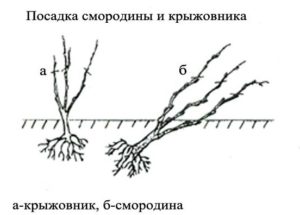
- Cover with earth (the top fertile soil layer mixed with humus or peat), while slightly lifting and shaking the seedling so that the earth wakes up between the roots and fills all the voids.
- Compact the soil so that the seedling "takes hold" in a new place.
Note! As a rule, when planting, it is recommended to bury the root collar 5-10 centimeters into the soil (so that the lower buds are underground) for good tillering (5 cm - on heavy soil, 10 cm - light). This will enable the currants to develop additional shoots directly from the ground in spring and thereby significantly increase the width of the bush. However, given that the earth is likely to settle, it is better not to deeply deepen initially.
By the way! The root collar is the place where the first root originates from the trunk.
- Next, you need to make a hole (roller) along the diameter (perimeter) of the trunk circle 5-10 cm high.
- Then pour abundantly, pouring out about a bucket of water (pour out gradually - wait for it to be absorbed, and add more).
Video: correct planting of black currant in autumn
Currant care after autumn planting
The first thing to do with the currant bush after planting is cut off its aerial part, leaving no more than 2-4 buds on each shoot (if you have two, then 2, if one, then 3-4).
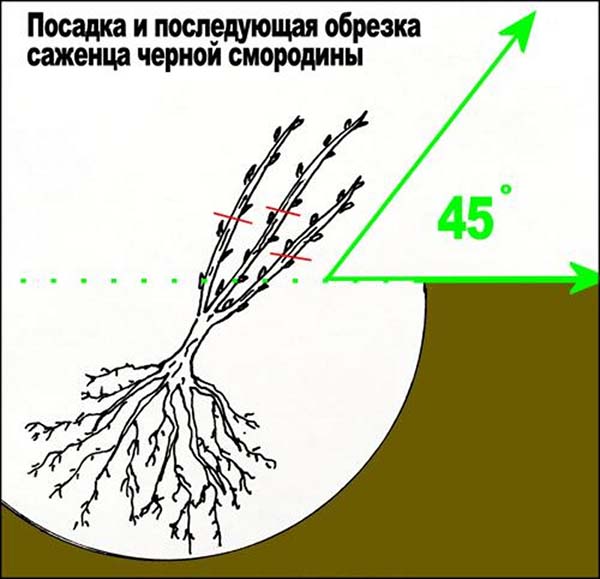
Of course, if the seedling was not cut in advance by the seller, because, as a rule, it is sold or sent in this form.
Why are they pruned after planting?
The fact is that in the fall, the main goal of the plant is to grow the root system in order to take root in a new place and survive the winter (not freeze out). The development of the aboveground part is not required, it is for this that it is shortened and equalized with the underground (in this case, even less is done).
In the future, the currants will not require any special post-plant care (in comparison with how if you planted in spring).
Further, in order to avoid freezing of the roots and protect them from bulging, it is very desirable to slightly mulch near-stem circle of currants. Humus, grass cuttings, hay, straw, or rotted sawdust are perfect for this.
Mulch can also help prevent root drying and excess moisture evaporation.
Of course, we must not forget about wateringespecially if the autumn is dry. In general, the autumn natural moisture is usually enough.
In the future, the composition basic activities for the care of currants will include the following:
Advice! About, what to do with currants in spring (how to care), detailed here, and in the fall during preparation for winter — here.
- top dressing (if you added the recommended amount of fertilizer to the planting hole, then next time you need to feed it only after 2-3 years);
The site has detailed articles about spring and autumn feeding of currants.
- trimming (spring and autumn (after harvest);
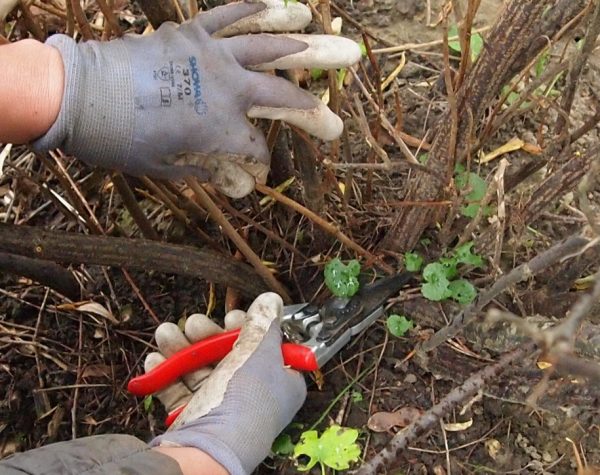
- treatment for diseases and pests;
About, when and how to process currants in spring, told here (in particular boiling water), in the fall — in this general article.
- If you have problems exactly with aphids, then this material will be useful to you on how to deal with aphids on currant bushes.
- The leaves turned red - look for the reason in this article.
- The leaves are covered white bloom, likely, powdery mildew hit the currants.
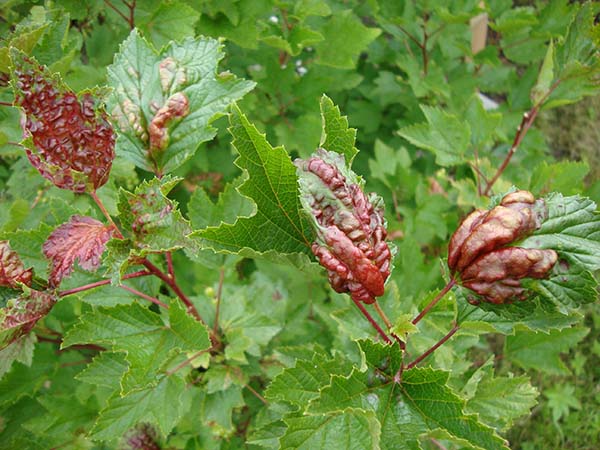
- transfer.
By the way! The site also has a detailed article on how how to transplant currants correctly in spring, summer and autumn.
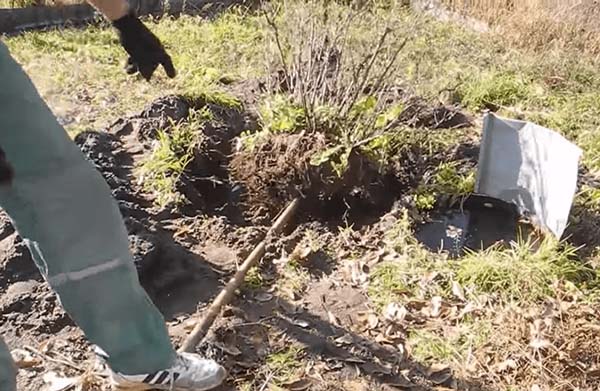
Possible mistakes when planting currants in autumn
In order not to learn from our own mistakes, the following will list the list of the most frequent and common mistakes that beginner gardeners make when planting currants in the fall:
- Too early (still with leaves) or, on the contrary, late planting of a seedling (when frosts are about to begin).
- Purchase and planting of a low-quality seedling.
- Choosing a place that is too shady.
- Planting bushes too close to each other (50-100 cm). As a result, harvesting, as well as caring for shrubs, becomes simply impossible.
- Ignoring the main rule of planting a seedling - pruning after planting.
Well, good luck with your autumn planting of currants! Remember that their further survival and yield will depend on how correctly you plant the bushes. So take your time and do everything according to science.
Video: how to plant currants in the fall correctly - 3 mistakes when planting

